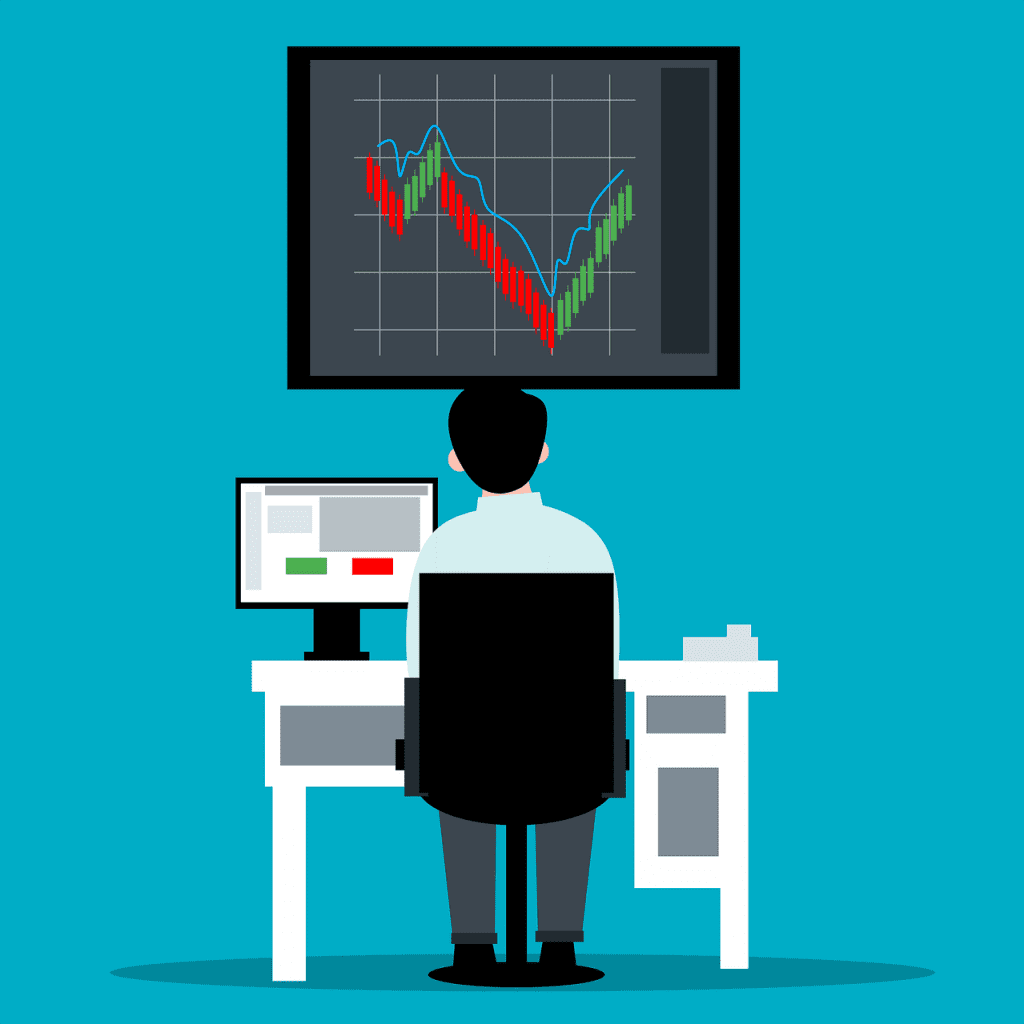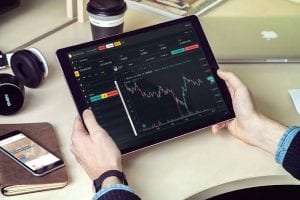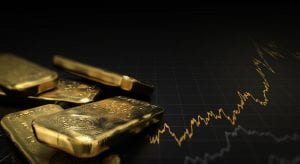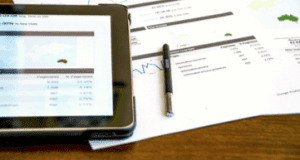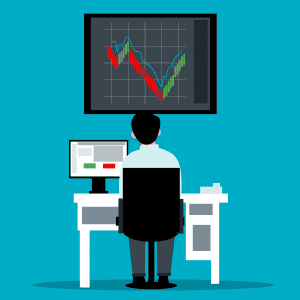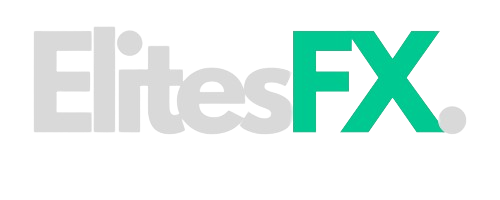A beginner’s guide to Forex trading.
Want to find out more about the forex market? Keep reading to find out more.
The foreign exchange market (forex) is a combination of foreign currency and exchange. Forex refers to the buying and selling of currencies across borders for a number of reasons, including business, trading, and tourism. According to a 2019 Bank for International Settlements (a global institution for national central banks) report, forex trading reached $6.6 trillion in 2019.1,1 The daily volume of forex trading was calculated at $6.6 trillion by the bank.
Because of the large amount of currency trading that occurs, rogue traders are unable to influence currency prices. Because of the interbank dealing that occurs, this system provides investors with transparency.
A forex broker should be researched by retail investors to find out whether it is regulated in the United States or the United Kingdom (U.S. and U.K. dealers are subject to more oversight) or in a country with weaker supervision and regulations. It is also advantageous to learn what kind of account security is available in case of a market emergency or in case a dealer goes out of business.
Learning about the forex markets and how to get started trading is what you will learn from this article.
A Forex trading beginners guide.
What is Forex trading?
When we conduct business and trade internationally, we must exchange international currencies. Currency exchange is done on the foreign exchange market. Because currencies allow us to purchase goods and services locally and across borders, they are vitally important.
If you are living in the United States and want to purchase French cheese, you or the company you purchase from must pay for it in euros (EUR). In other words, the U.S. importer must exchange U.S. dollars (USD) for euros.
A French tourist visiting Egypt cannot pay in euros to see the pyramids because they are not accept in the local currency. The tourist must exchange his euros for Egyptian pounds at the current exchange rate.
Currency trading happens electronically over the counter (OTC), which is one of the unique aspects of this global market. There is no central forex trading platform; rather, traders throughout the world trade electronically via computer networks. The market operates 24 hours a day, five and a half days a week, and currencies are bought and sold worldwide in Frankfurt, Hong Kong, London, New York, Paris, Singapore, Sydney, Tokyo, and Zurich—across a wide range of time zones. When the U.S. trading day ends, the forex market starts up again in Tokyo and Hong Kong. As a result, the forex market is particularly active at all times of day, with price quotes changing continuously.
Forex trading has a short history.
People have been exchanging or bartering goods and currencies to purchase goods and services for centuries. However, the forex market, as we know it today, is a relatively new idea.
In 1971, after the Bretton Woods agreement disintegrated, currencies began to float more freely against one another. Foreign exchange trading services monitor the values of individual currencies, which are determined by demand and circulation.2
Forex markets are dominated by commercial and investment banks, but professional and individual investors also have the option of trading one currency against another.
A currency can be defined as either a medium of exchange or a store of value.
An investor can make money by buying one currency with a high interest rate and shorting another currency with a low interest rate, if their interest rates differ. In the years leading up to the 2008 financial crisis, the Japanese yen (JPY) and the British pound (GBP) were frequently shorted because their interest rates differed so much. This strategy is sometimes referred to as a carry trade.
Prior to the Internet, currency trading was difficult for individual investors since most currency traders were large multinational corporations, hedge funds, or high-net-worth individuals (HNWIs). Thanks to the Web, individual traders have been able to access the foreign exchange market easily either through the banks themselves or through brokers who create a secondary market. Many online brokers or dealers offer high leverage to individual investors who may control a major transaction with a limited account balance.
The purpose of this post is to give an overview of the Forex market.
Institutions and large banks used to control the forex market, which is the only continuously operating and nonstop trading market in the world. However, the market has become more retail-focused in recent years, and traders and investors of all sizes are now participating in it.
There are no physical buildings that function as trading venues for world forex markets; rather, it is a network of terminals and computer networks that connect. Institutions, investment banks, commercial banks, and retail investors participate in this market.
According to experts, the foreign exchange market is more obscure than other financial sectors. Institutional investors often provide significant liquidity in the foreign exchange market, where disclosures are not mandatory. Perhaps the most important economic indicators should be used to determine a country’s price, but they are not. According to a 2019 survey, the motives of large financial institutions are the biggest determinants of currency value.
The three main venues for forex trading are spot markets, forward markets, and futures markets. The spot market is the largest of the three because it is the underlying asset for forward and futures markets. When people talk about the forex market, they are usually referring to the spot market. It is more popular with companies or financial institutions that want to hedge their foreign exchange risks out to a specific date in the future.
Regular trading market
The spot markets have always been the largest in terms of real assets traded on the forwards and futures markets. Previously, volumes on the forwards and futures markets outnumbered those on the spot market. However, the forex spot market was revitalised as electronic trading became widespread and forex brokers proliferated.
A spot exchange is an arrangement in which currencies are sold and purchased based on their current rates. A currency’s value in the spot market is based on demand and supply, and it is calculated based on several factors, including current interest rates, economic performance, political situations both domestic and international, and the perception of future currency performance. A spot exchange is a bilateral agreement in which one party agrees to deliver a certain amount of one currency in exchange for a certain amount of another currency of equivalent exchange rate value. After a position has been closed, the settlement is cash. Although the spot market is generally known as one that trades in the present (instead of in the future), the settlement actually takes two days.
There are two types of markets—forwards and futures—where people can trade financial instruments.
A forward contract is a privately arranged transaction in which two parties agree to buy a currency at a future date and at a specified price in the over-the-counter market. Futures contracts, on the other hand, are standardized agreements in which two parties agree to deliver a currency at a future date and at a predetermined price. Futures are traded on exchanges, not OTC.
An OTC forward contract is one in which two parties negotiate the terms of their agreement independently. Futures contracts on public commodity exchanges, such as the Chicago Mercantile Exchange (CME), are purchased and sold based on a standard size and settlement date, in contrast to the futures market, where futures contracts are bought and sold OTC between two parties.
The National Futures Association regulates the futures market in the United States. Futures contracts have specific details, including the volume of units being traded, delivery and settlement dates, and minimum price increments that cannot be altered. The exchange plays the part of a counterparty to the trader, providing clearance and settlement services.
Currency forwards and futures contracts are both binding and are usually settled in cash at the relevant exchange upon expiration, although they may also be purchased or sold beforehand. These markets may help protect against risk when trading currencies, particularly big international companies that use them to hedge against future currency fluctuations, as well as speculators.
Forex options, in addition to forwards and futures, are also traded on certain currency pairs. Holders of forex options have the right but not the obligation to enter into a forex trade at a future date and for a pre-set exchange rate, before the option expires.
Forwards, futures, and options don’t trade actual currency; instead, they trade contracts that represent a certain currency type, a specific price per unit, and a future date of settlement. Because they are derivatives markets, they are therefore referred to as such.
The Forex markets are used for several purposes.
Companies doing business outside of their domestic market are at risk due to currency fluctuations when buying or selling goods and services. The foreign exchange market provides a way to hedge currency risk by fixing a rate at which the transaction will be completed.
An individual can purchase or sell currencies in the forward or swap markets in advance to lock in an exchange rate. For example, if a firm wished to sell American-made blenders in Europe when the euro-dollar exchange rate was equal to €1 for $1, he would have to purchase euros in advance.
The U.S. firm plans to sell the blender for €150, which is competitive with other blenders made in Europe. Manufacturing the blender cost $100, and the firm expects to earn $50 for each blender sold, as EUR/USD exchange rate is even. Unfortunately, the U.S. dollar begins to rise in value against the euro until the EUR/USD exchange rate is 0.80, meaning it now costs $0.80 to buy €1.00.
Blenders still cost $100 to produce, but the company can only sell the product for €150—less than half the price in dollars (€150 × 0.80 = $120). The dollar has strengthened, resulting in far less profit than expected.
Blender companies may have mitigated this risk by shorting the euro and buying the U.S. dollar when they were equal in value. If the U.S. dollar rose in value, the profit from the trade would compensate for the decreased revenue from blenders, for example. If the U.S. dollar fell in value, the favourable exchange rate would enhance the profits from blender sales, which would compensate for losses.
In the currency futures market, this type of hedging can be accomplished. A central authority clears and standardizes futures contracts, providing an advantage for the trader. On the other hand, currency futures may be less liquid than interbank forwards markets, which are decentralized and exist throughout the world.
Forex is a great way to make money through speculation.
Forex markets are subject to daily volatility as a result of interest rates, trade flows, tourism, economic strength, and geopolitical risk. One currency’s value may increase or decrease relative to another currency because of changes in the forex markets. An opportunity exists to profit from forecasts that one currency will weaken or increase in value relative to the other currency in a pair. Because currencies are traded in pairs, an expectation that one currency will increase implies that the other currency will decrease.
An individual who anticipates that the United States’ rates will rise relative to Australia’s, while the USD/AUD exchange ratio remains at 0.71 (1 USD = 0.71 AUD), desires USD demand to increase, thereby causing the USD/AUD exchange rate to fall. To buy an AUD, the individual expects to need fewer, more powerful USDs, resulting in a lower exchange rate.
If the trader is correct and interest rates rise, which decreases the AUD/USD exchange rate to 0.50, an investor that shorts the AUD and goes long on the USD would profit from the change in value. $0.50 USD would be required to purchase $1.00 AUD in this situation.
To start trading forex, follow these steps.
Forex trading is comparable to equity trading. Here are a few pointers to get you started on your forex trading journey.
Forex trading, while not complicated, is a completely different kind of venture and requires in-depth knowledge. For example, the leverage ratio for forex transactions is higher than for equity trading, and the drivers of currency prices are different from those of equity markets. Several online classes are available for newcomers that describe how to trade forex.
You will require a forex trading account at a brokerage to begin forex trading. Forex brokers do not charge commissions; rather, they profit from the gaps (also known as pips) between the buying and selling prices.
Micro forex accounts are a good option for novice traders, as they require minimal capital and offer flexible trading limits. A common account lot is 100,000 currency units, but micro accounts can be limited to as little as 1,000 units. Forex trading will become more familiar and you’ll establish your style as you trade a micro account.
Having a trading strategy is important because it establishes broad guidelines and a road map for trading while helping you anticipate and time market movement. A sound trading strategy is contingent on your situation and funds. It quantifies the quantity of money you are willing to invest as well as the amount of danger you are willing to take in order to gauge the quantity of cash you can afford to lose without going broke. Forex trading is a high-risk environment where one must be willing to gamble in order to gain.
Always be aware of your numbers when you begin trading. Make sure you do not have any pending orders that need to be fulfilled or that you have enough money in your account to make future trades using your trading software.
There are numerous emotional roller coasters and unanswered questions associated with beginner forex trading. Should you have held onto your position a bit longer to gain more profits? Why didn’t you notice that report on low gross domestic product (GDP) numbers that led to a decline in your portfolio’s overall value? Obsessing over such unanswered questions may lead to confusion. You should maintain emotional stability as a result of gains and losses as a consequence of trading. Close out your positions when necessary, and don’t become carried away by them.
Here are some terms you should know before trading Forex.
Learning forex’s lingo is the best way to get started on its journey. Here are some words to get you started:
Remember that the leverage provided by the broker comes in addition to your trading limit, so you will only be able to use $10 of your own money to trade currencies worth $1,000, for example. For every $1 that you contribute, the broker may contribute $100.
There are four basic Forex trading strategies.
Forex trading can be broken down into two basic categories: long trades and short trades. When a trader makes a long trade, they wager that the currency’s value will rise in the future and that they will profit from it. A short trade is one in which a trader expects the currency pair’s value to decrease in the future. Technical analysis may be used in addition to breakout and moving averages to improve their trading approach.
A trading strategy can be divided into four further types, depending on the duration and the number of people trading:
Forex trading relies on certain charts.
Forex trading utilises three types of charts.
A line chart displays information as a line.
Forex traders employ line charts to examine global trends in currency values. They are the simplest and most typical type of graphic used in forex trading. Line graphs display the currency’s closing price over specific periods of time. Trend lines can be used to devise trading strategies using the information provided. Using a trend line, you might be able to recognise when a breakout or a change in direction is taking place for rising or falling prices.
A line chart can be a good starting point for further trading analysis, provided that it is not the only information used for such purposes.
Bar charts are used to compare different data.
Bar charts are a type of chart used to show the daily price movements of a particular asset. Bar charts provide more information than line charts about price changes. Each bar chart represents one trading day and lists the opening price, highest price, lowest price, and closing price (OHLC). On the left is a dash that indicates the opening price, and on the right is a dash that indicates the closing price. The colors are used to indicate price changes, with green or white representing increasing prices and red or black representing falling prices.
Bar charts can help currency traders determine whether it is a buyer’s market or a seller’s market.
Candle charts are used to track stock prices.
The Japanese rice traders used candle charts in the 18th century to show rice prices. Candle charts are preferred because they are visually appealing and simple to read. A currency’s opening price and highest price point are displayed in the upper portion of a candle, while the closing price and lowest price point are shown in the lower portion. Down candles represent a reduction in prices and are coloured red or black, while up candles signify an increase in prices and are coloured green or white.
Candlestick charts provide information about the direction and velocity of market activity. The hanging man and shooting star patterns are two of the most well-known candlestick formations.
The advantages and disadvantages of Forex trading are listed below.
The advantages and disadvantages of Forex trading are listed below.
The Forex market is the largest in terms of daily trading volume, making it the most liquid. It is simple to enter and exit positions in any of the major currencies with a minimal spread in most market conditions. The forex market operates 24 hours a day, five and a half days a week—starting each day in Australia and ending in New York. Because of the long time frame and coverage, traders have several chances to profit or to recoup losses. Frankfurt, Hong Kong, London, New York, Paris, Singapore, Sydney, Tokyo, and Zurich are the major forex market centers. Levers are used extensively in forex trading, so you can start with a little cash and multiply your profits. The forex market operates in a similar fashion as regular trading and requires less initial capital, making it easier to start forex trading compared to stocks. In comparison with traditional stock or bond markets, the forex market is more decentralized. Because there is no centralized exchange dominating currency trading, there is less possibility of information being used to manipulate the market through insider knowledge about a company or stock.
Although the forex market is the largest and most liquid in the world, its trades are far more volatile than those in the traditional markets. The forex market, which is controlled by banks, brokers, and dealers, allows for a high degree of leverage, which means that traders can control huge positions with a small amount of personal capital. It is not uncommon for forex accounts to use leverage in the range of 100:1. It is critical to realise the dangers that leverage poses in an account. Forex traders must understand the importance of economic fundamentals and indicators in order to be successful. A currency trader must grasp the fundamentals of the economy and its interconnectedness with other countries in order to grasp the driving factors behind currency values. The forex market is less regulated than other financial markets, which may be why it is particularly attractive to investors who want to gain heavily but do not want regular dividends. In forex, the extent and nature of regulation are determined by jurisdiction. Forex markets may be attractive to investors who desire regular income (such as regular dividends) since they lack regular income-producing instruments.
People trade currencies because of three reasons: To make money, to speculate on currency markets, or to diversify their portfolios.
Traders and firms use forex for two main reasons: speculation and hedging. The former is used to lock in price for manufacturing and sales in international markets, whereas the latter is used to make money off currency prices as they rise and fall.
Is the Forex market volatile?
Because forex markets are among the world’s most liquid markets, they are less volatile than other markets such as real estate. The volatility of a currency is determined by a variety of factors, including its country’s politics and economy. Because of this, economic instability in the form of a default on payments or an imbalance in trading relationships with another currency can result in significant volatility.
Is Forex trading regulated?
In order to regulate forex trading, nations like the United States utilise sophisticated infrastructure and markets. Due to the high reliance on leverage in forex trading, developing nations like India and China restrict the firms and capital that can be utilised for forex trading. Forex trading regulation, therefore, is handled by the National Futures Association (NFA) and the Commodity Futures Trading Commission (CFTC) in the United States.
Which currencies can I trade?
A currency with high liquidity has smooth and predictable price action in response to external events, as it is traded on a large number of markets. The U.S. dollar is the world’s most heavily traded currency. The U.S. dollar is the sixth most common currency in the world, appearing in seven of the most liquid currency pairs. On the other hand, a currency with low liquidity cannot be traded in large quantities without resulting in significant market changes. These currencies are usually found in developing nations. When paired with a developed country’s currency, they form exotic pairs. The U.S. dollar and India’s rupee, for example (USD/INR), are known as exotic pairs.
How Do I Begin Forex Trading?
Forex trading begins with learning about the market and its terminology. After that, you should develop a trading strategy based on your financial resources and risk tolerance. Finally, you should open a brokerage account. Setting up and funding an online forex account is simpler than ever before, and you may now begin trading currencies.
The final verdict.
In comparison to other markets, the forex market is more favorable for those with limited funds who are looking to day trade or swing trade small amounts. Traders with longer-term horizons and higher budgets may benefit from long-term fundamentals-based trading or a carry trade. Knowing the macroeconomic fundamentals that influence currency values, as well as being familiar with technical analysis, may assist new forex investors to become more successful.

